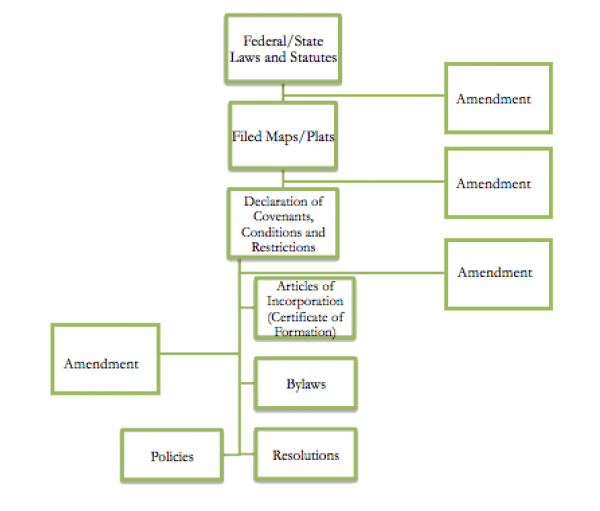Upcoming Board Focus Trainings
Quarter One:
Governing Documents and Texas Legislation- HOA Requirements and Roberts Rules of Order- February 22nd at 6:00 PM
Sight-Line Services- Program and Service overview/introduction- March 29th t 6:00 PM
Quarter Two:
Collections and the Fair Debt Collection Act- HOA Options, Responsibilities, Waiver Requests- May 24th at 6:00 PM
Quarter Three:
Understanding your HOA Financial Packages and HOA Vendor Invoicing- August 16th at 6:00 PM
Quarter Four:
Facilities Management; Holiday Décor/Pool Closing/Amenity Center Reservation/Maintenance Etc. Allocating Efficiently to Reserves for Facility Maintenance. – November 14th at 6:00 PM
For questions regarding our training program please reach out to Rachael Carmichael, Director of Career and Client Development at training@vcmtexas.com.
What does an HOA Board President do?
The president leads the Board and is responsible for overseeing and handling many of its procedural duties. In order to succeed in this role, the Board president must be knowledgeable about the community’s CC&Rs and governing documents and understand how to run an effective meeting. He or she serves as the authority on all association rules and governing documents, and appoints committees if dictated by the bylaws. The president also leads community and association meetings, handling such responsibilities as calling the meeting to order, announcing the agenda and ensuring adherence, maintaining attendee order and decorum, proposing questions, calling for votes and announcing the results, and recognizing others to speak on the floor.
What does an HOA Board Vice-President do?
The Board vice president shares many of the leadership and procedural duties with the president, including assuming the leadership role when the president is unable to do so. The vice president’s responsibilities include ensuring order is maintained during meetings and parliamentary procedures, ensuring a smooth flow of business and serving as an informed source about association rules, bylaws and governing documents
What does a Board Treasurer do?
The Board treasurer is responsible for the association’s funds, securities and financial records. He or she oversees billing, collections and disbursement of funds, and coordinates the development of the association’s proposed annual operating budget and reserve allocations. In addition, the treasurer is responsible for monitoring the budget and reporting on the association’s financial status throughout the year, as well as for overseeing year-end reporting and any required audits. In self-managed communities, in which many of the day-to-day financial responsibilities are handled by a property management company, the treasurer is responsible for ensuring that all association funds are collected, disbursed, invested and reported accurately and remain in compliance at all times with the association’s by-laws and governing documents.
What does a Board Secretary do?
The HOA secretary maintains the association’s meeting minutes and official records, reviewing and updating documents as required and ensuring they are stored safely and accessible to association members. He or she is responsible for providing proper notice of meetings, as well as distributing documents, such as official records, agendas and meeting minutes, on a timely basis to association members and/or their authorized representatives. In addition, as the custodian of the association’s official records and documents, the secretary ensures the association meets all legal documentation requirements, such as annual filing deadlines.
What does an HOA Board Director at Large do?
The Board director at large provides support to the other board members and other duties as assigned or assumed based on community needs.
How to Read and Utilize your Governing Documents
Definitions:
Articles of Incorporation (Certificate of Formation) – this document is what “creates” the association. What will it include?
Declaration of Covenants, Conditions and Restrictions (AKA CCRs or the Declaration) – this document “establishes” the rights and obligations of the association and its owners. This is the “meat” of the association and is the most commonly referred to document. What will it include?
Bylaws – this document provides the “structure” of the association. What will it include?
Rules & Regulations (AKA Board Resolutions, Architectural Standards and Policies) – these documents “elaborate or expand” (never contradict!) the established governing documents, typically the Covenants, Conditions and Restrictions. Examples include:
Amendments – these documents “change” the established governing documents. They will replace a section or in whole an existing document. They will often require a large vote of the association Members. You should always look for a specific section outlining amendment requirements.
Maps/Plats – this document is the “footprint” of the community. What will it include?
Hierarchy of Governing Documents
Each document has its own place and purpose, but there are times when you will find contradictions among the documents. The hierarchy establishes which document supersedes.

What does the management company do?
What is the association manager’s role?
The association manager is a highly-qualified, well-trained profession who has two primary roles: carry out Board policies and to manage the association’s daily operations.
We would be honored to serve your community. Experience the VCM difference, reach out to us today!
Get Started